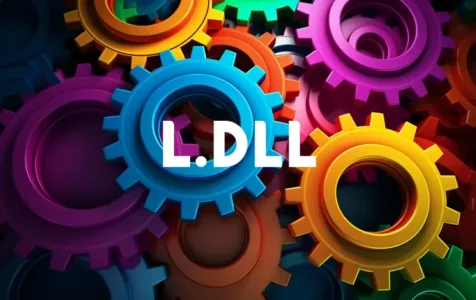The file l.dll is a dynamic-link library, commonly known as a DLL, which is a shared library within the Microsoft Windows operating systems. It is a unique file that can often be found as a Browser Helper Object (BHO) that runs automatically whenever you start your web browser. DLLs like l.dll can extend the functionality of the browser, in this case, Internet Explorer, allowing it to perform additional tasks.
However, l.dll is not just any DLL file; it has some peculiarities. For example, it can change the behavior of or monitor Internet Explorer, but it is not identified as a system file by Windows. Moreover, the process linked to l.dll has no file description and is not visible as a program. In addition to that, the l.dll file is capable of monitoring applications and appears to be a compressed file.
Is it safe to run l.dll?
Safety concerns around l.dll come from its classification as potentially unwanted software, specifically as harmful adware by some anti-malware programs. For instance, Symantec identifies it as WS.Reputation.1, and Sophos detects it as MultiPlug. The issues that might arise due to this DLL include the display of unnecessary ads, slowing down your computer, and causing various errors.
It is commonly installed without clear consent from users, typically bundled with freeware products like YouTube downloaders or PDF converters. This stealthy installation method, coupled with the fact that personal firewalls don’t block it due to its integration with the browser, can make it a security risk.
Expert Tip: For smoother PC performance, consider using a PC optimization tool. It handles junk files, incorrect settings, and harmful apps. Make sure it's right for your system, and always check the EULA and Privacy Policy.
Special offer. About Outbyte, uninstall instructions, EULA, Privacy Policy.
Could l.dll be a virus or malware?
While l.dll itself is not a virus, it is often associated with adware-type behavior. This means it could compromise your browsing experience by displaying intrusive advertisements and tracking your browsing habits. Such behavior is often considered malicious due to privacy concerns and the potential security risks posed by adware.
Common issues associated with l.dll
The typical issues reported by users regarding l.dll include increased ad displays, browser hijacking where your default search engine or homepage might be changed, a noticeable decrease in system and internet browser performance, and overall system instability.
How can these issues be fixed?
Fixing the problems related to l.dll involves a few steps:
1. Manual removal: Attempt to locate and uninstall the NewSSaver software or other associated freeware that installed l.dll.
2. Scan for malware: Utilize a reputable anti-malware program to scan your system and remove any found threats.
3. Reset your browser settings: If your homepage or search engine has been hijacked, you can manually reset them back to your preferred options within the browser settings.
4. Use System File Checker (SFC): Run the `sfc /scannow` command in the Command Prompt (with administrative privileges) to scan for and restore corrupted system files.
5. Perform a system restore: If the issues began after installing certain software, you can restore your system to a previous state before the installation.
6. Keep your system updated: Ensure that your browser and operating system are up-to-date with the latest security patches and updates.
Detailed instructions for fixing issues
Here’s how to tackle some of the methods mentioned above:
Browser settings reset:
For example, in Internet Explorer, go to “Internet Options,” click on the “Advanced” tab, and click “Reset.” In other browsers, look for similar options under settings or preferences.
Running SFC:
1. Open Command Prompt as an Administrator by typing “cmd” in the Start Menu, right-clicking on “Command Prompt,” and selecting “Run as administrator.”
2. Type `sfc /scannow` and press Enter.
3. Wait for the process to finish and reboot your computer if necessary.
Performing a system restore:
1. Type “create a restore point” in the Windows search bar and select it.
2. Click “System Restore” and follow the prompts to select a restore point prior to the installation of the problematic software.
Updating your system:
Regularly check for updates on Windows by going to “Settings” > “Update & Security” > “Windows Update” and clicking “Check for updates.”
Remember, these steps are for addressing the problems frequently reported with l.dll. Given its potential risks, if you are not comfortable handling these steps on your own, it might be wiser to seek help from a professional.
It is important to note that while users may encounter the l.dll file as a necessary component of certain legitimate applications, due diligence is essential to ensure that the file is not behaving maliciously. If you’re unsure, seeking advice from reliable security forums or IT professionals might help clarify any concerns. Unfortunately, as per the instructions, we cannot provide external links to forums or discussions related to the l.dll file.
